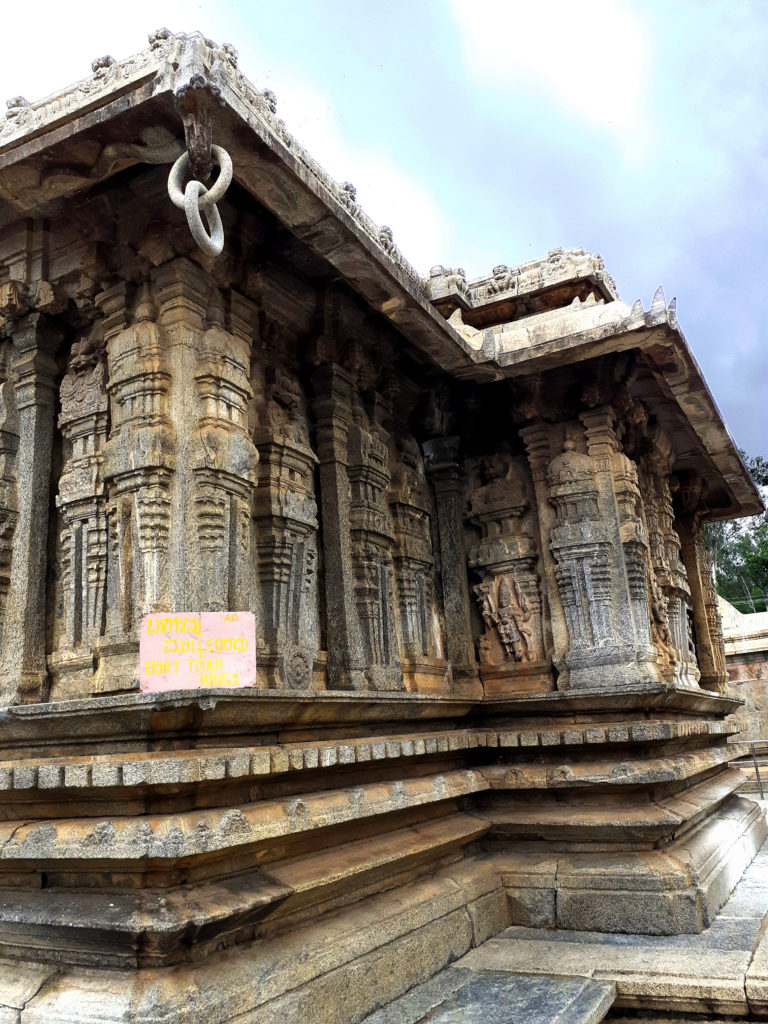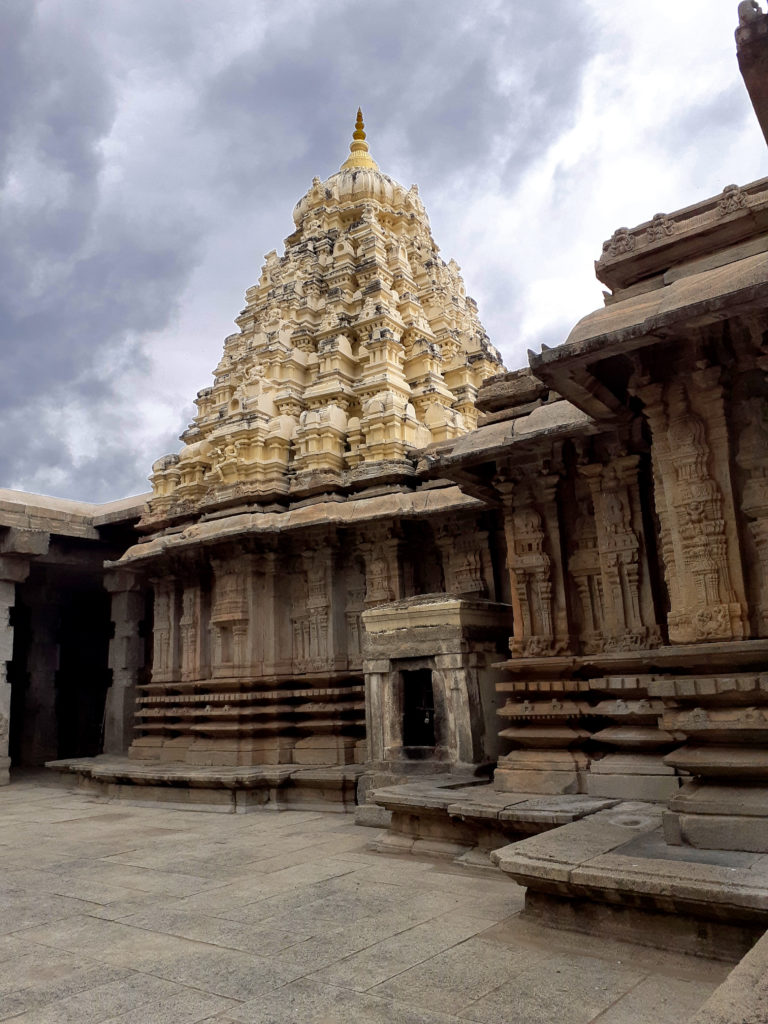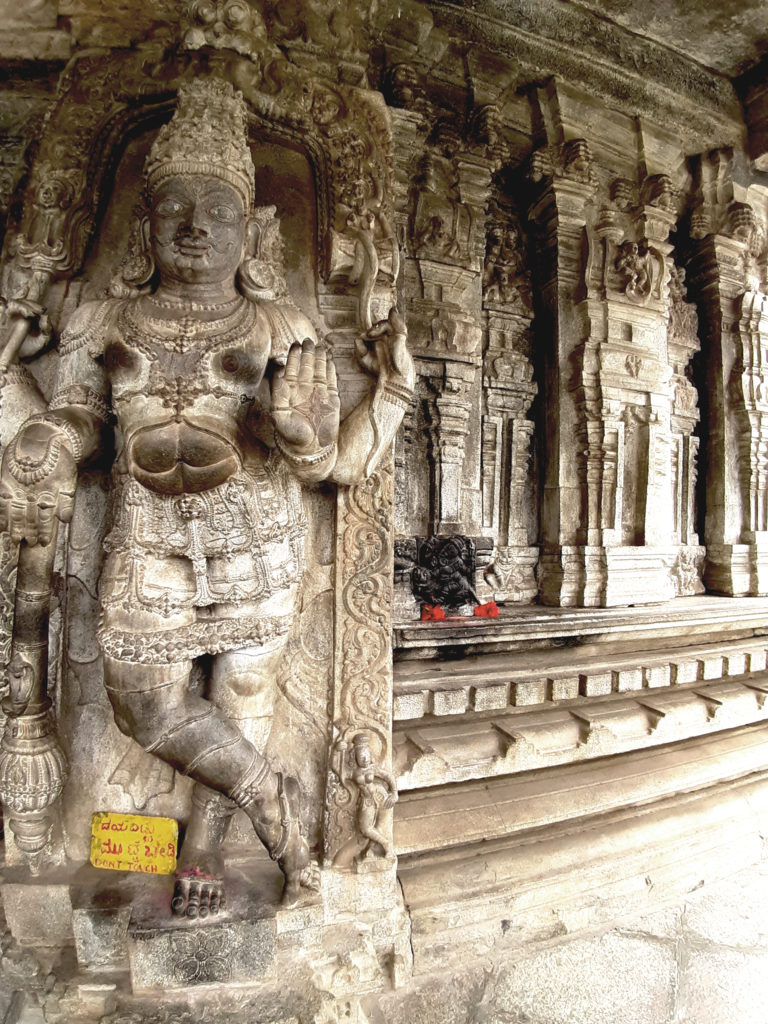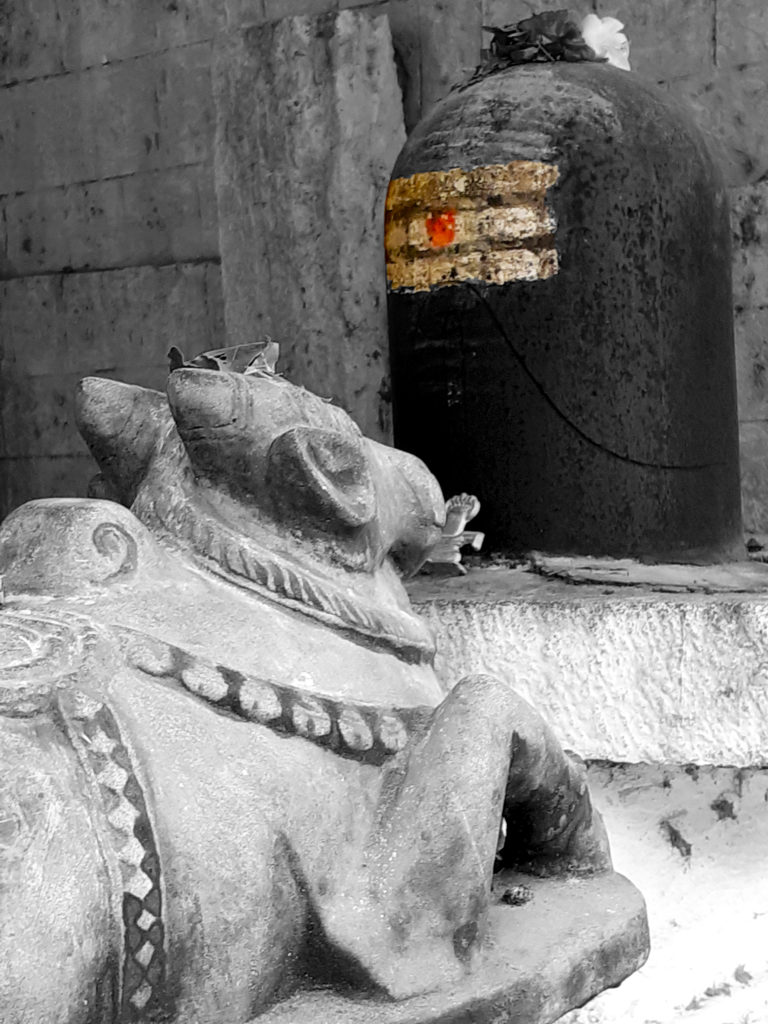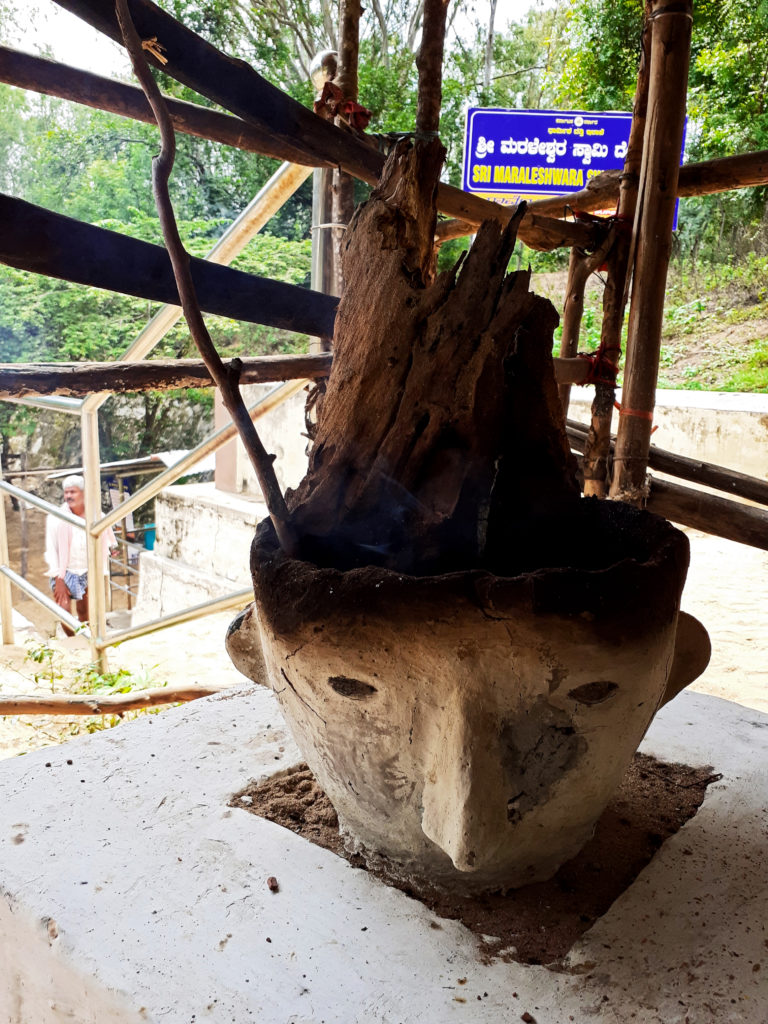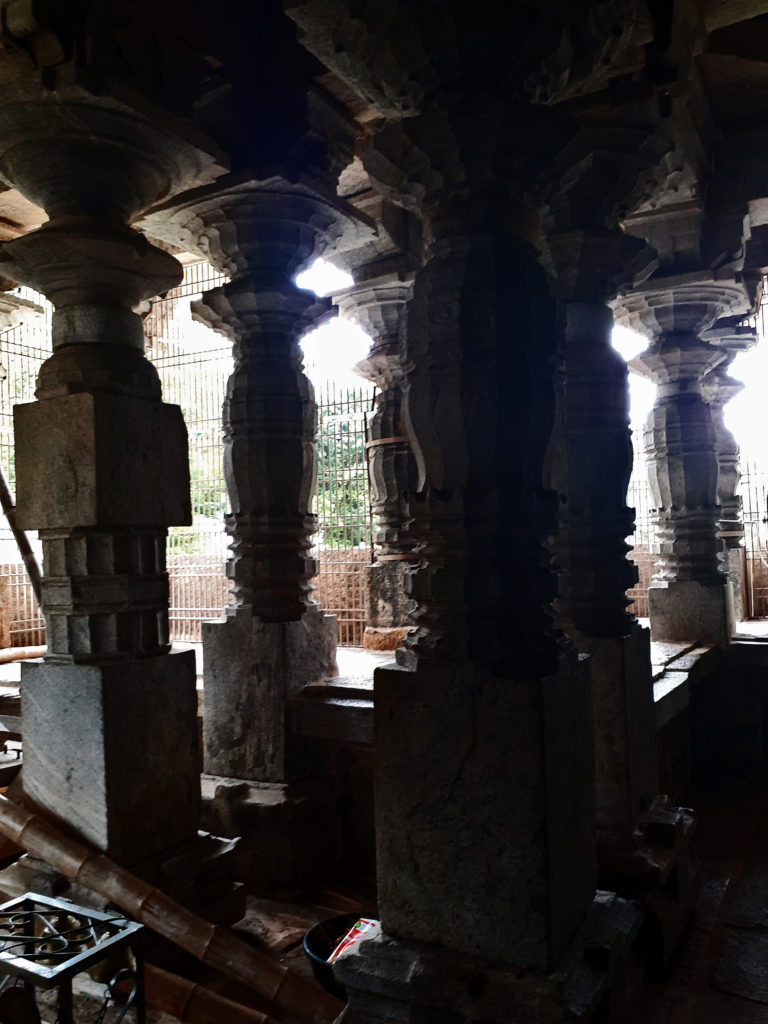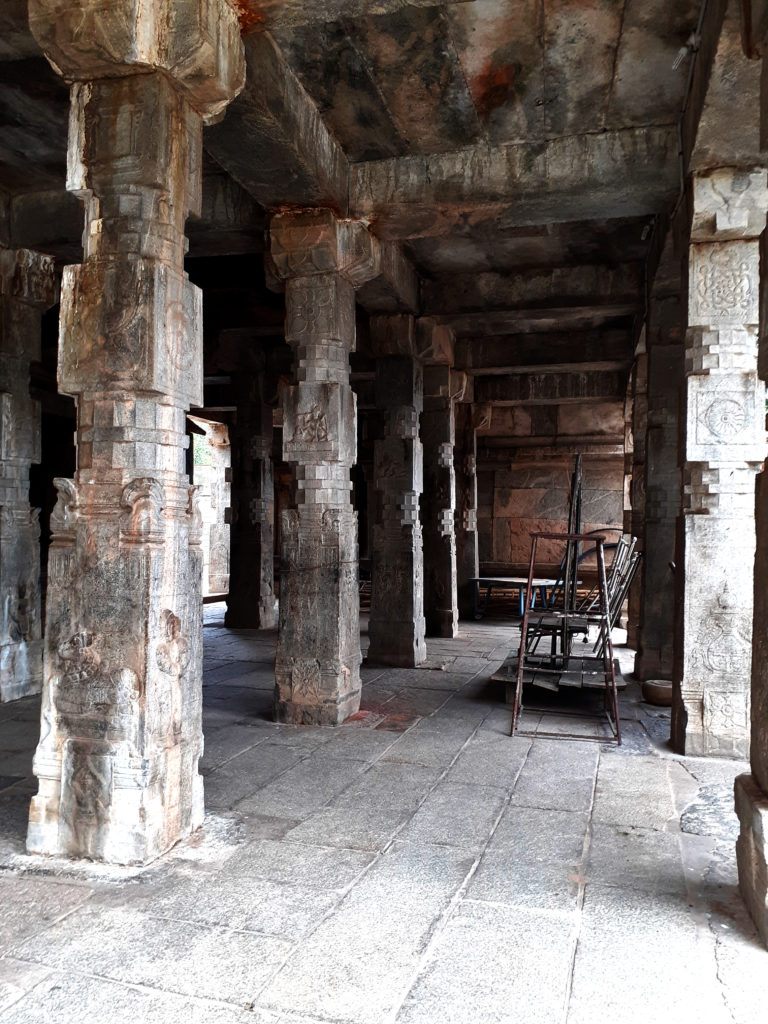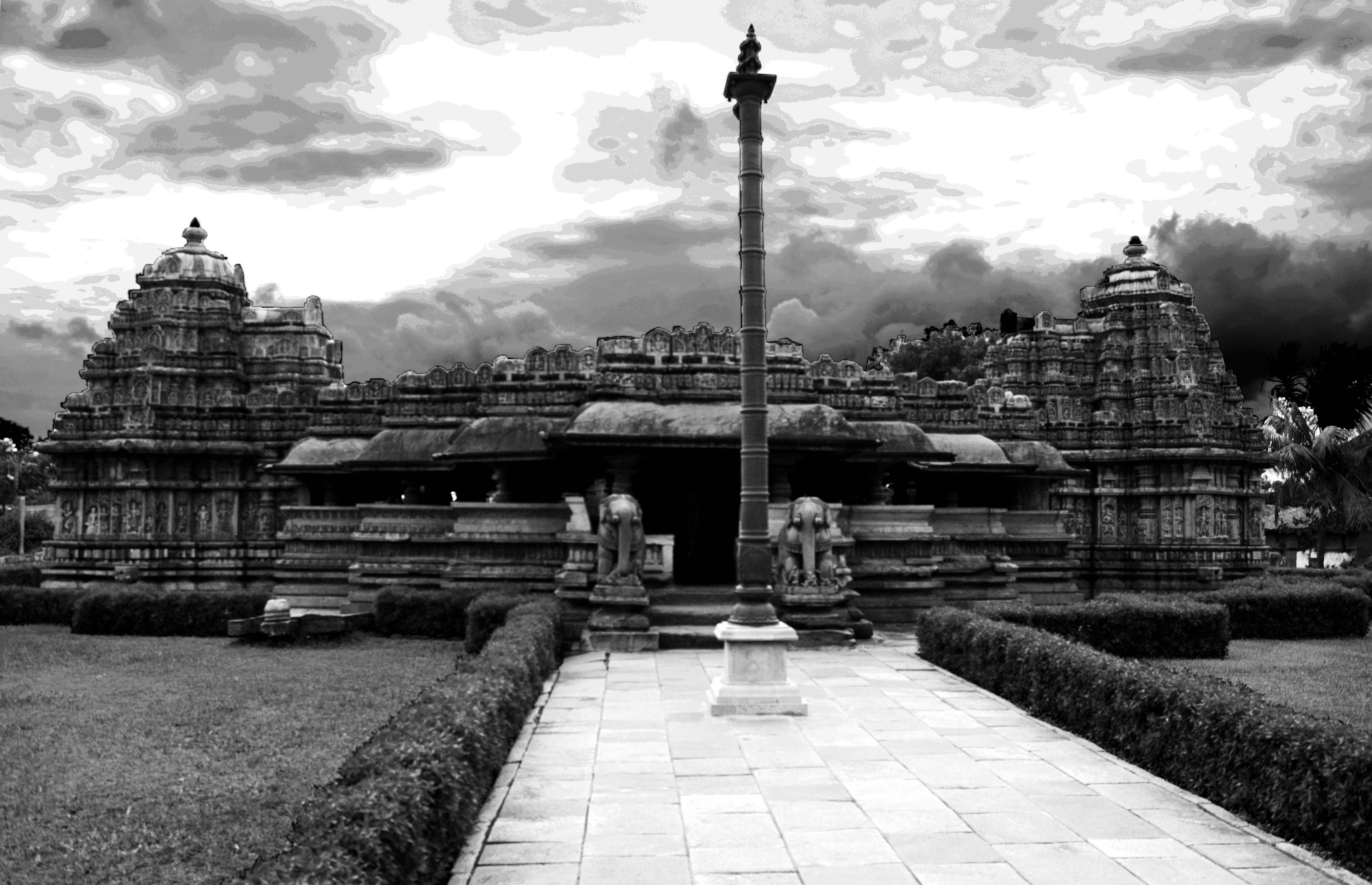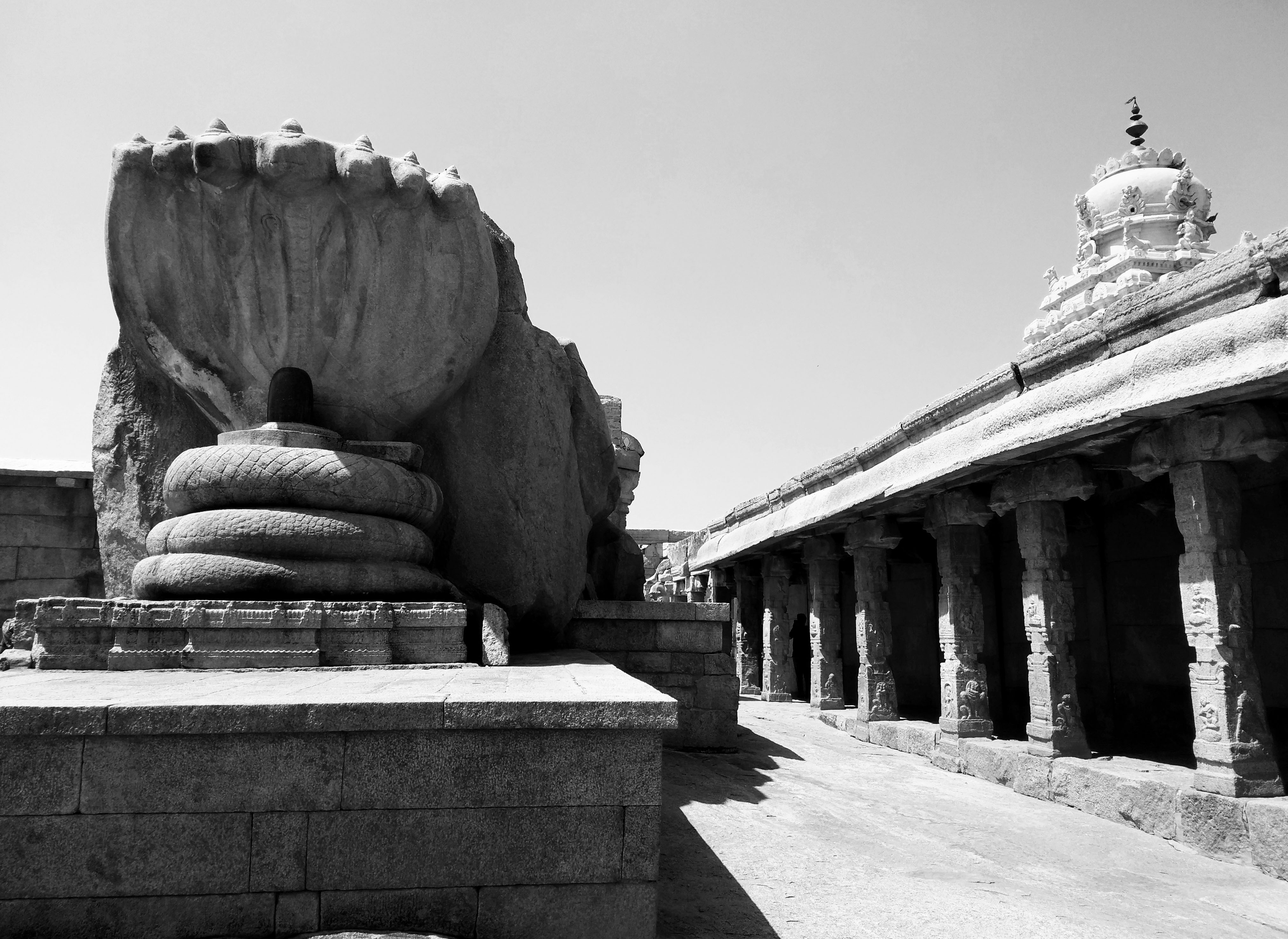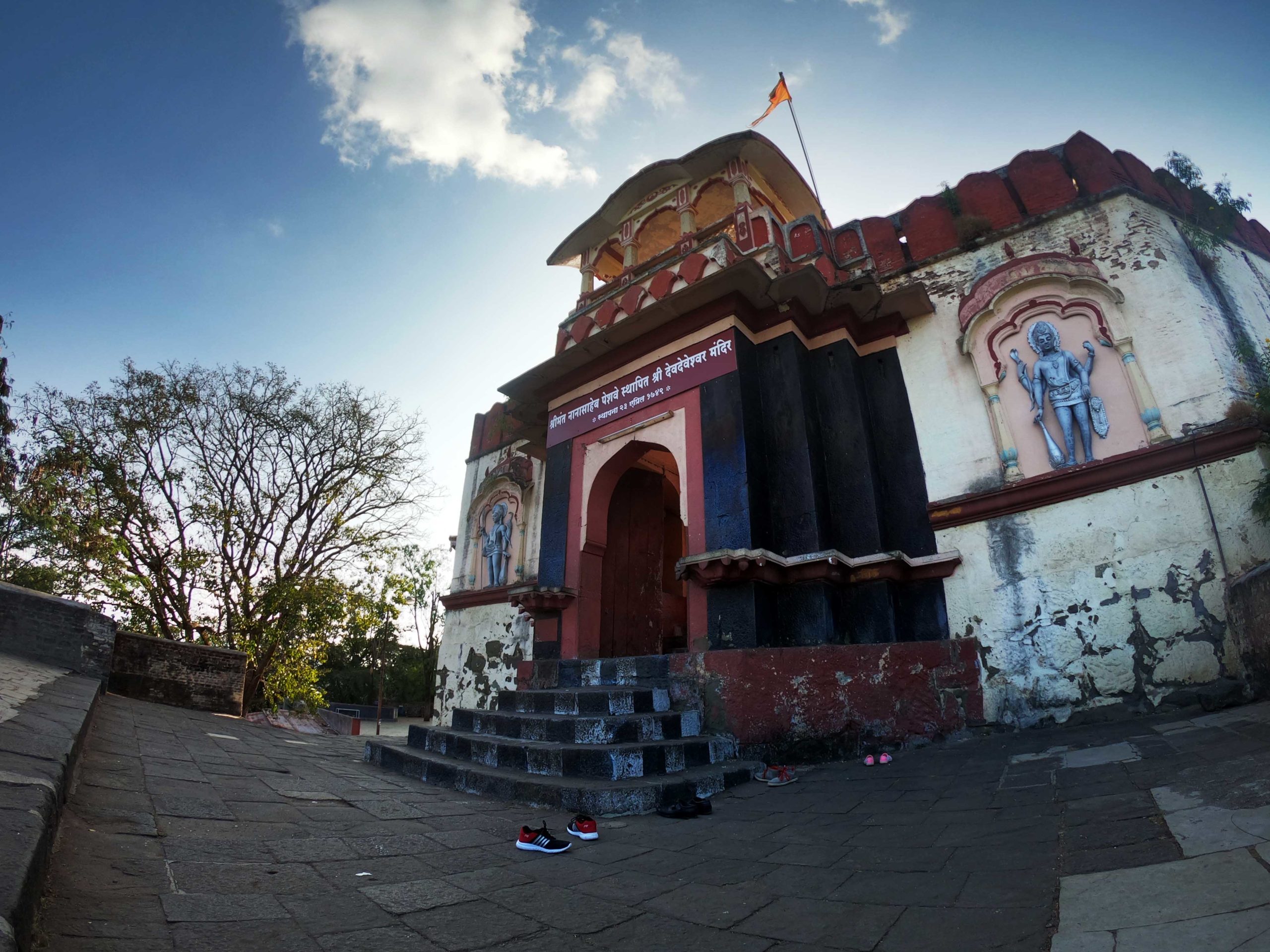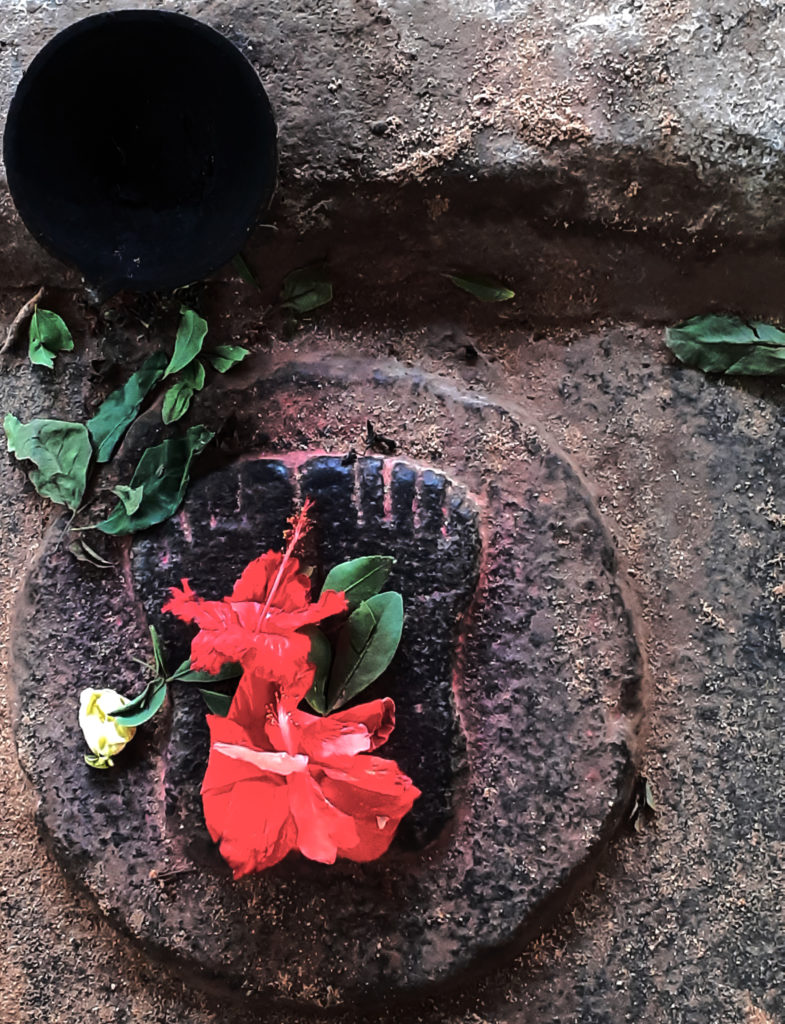
Since dawn of time, Kavery river is a lifeline of the southern India. Many dynasties flourished and perished in these sandy banks. One of those were Ganga and Cholas. Talakadu use to be one of the strongest capital of Gangas, who erected marvelous architectures, reflecting on the calm Kavery waters. All that remained is few temples buried under tons of sand, surrounded by lush green vegetation. They echo the tales of a brilliant civilization on the music of gigantic waterfall twins- Gaganchukki and Barachukki.
-
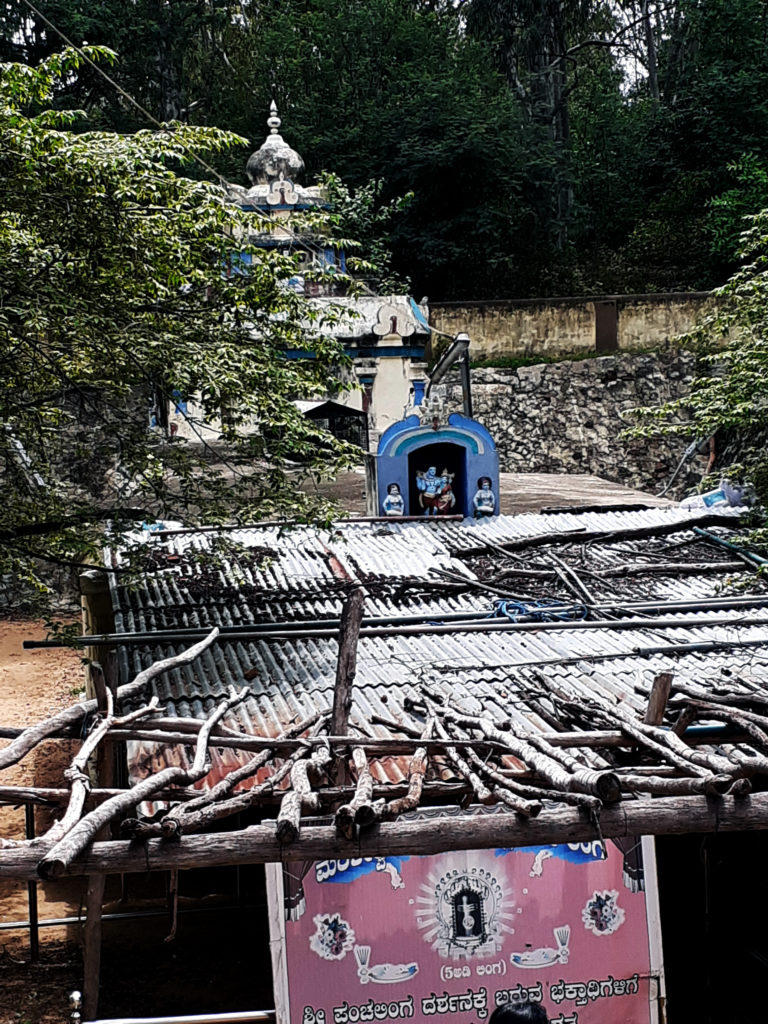
Marleshwar -
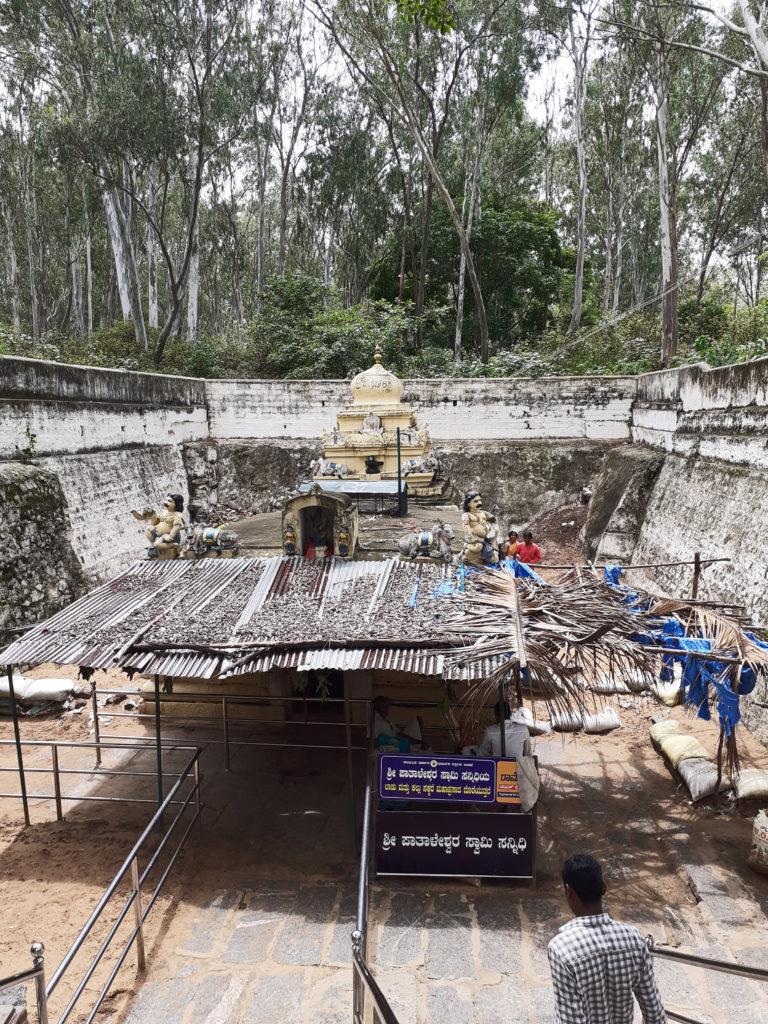
Pataleshwar
Western Ganga Dynasty established in karnataka in 350 CE under the rule of king Konginavarman, maintained its suvrenty till 550 CE, and lasted till 1000 CE under other dynesties. Erlier, Kolar being the capital, they shifted to Talakadu after 40 years. Shavivism and Jainism flourished under their rule, resulting in architectural marvels such as India’s largest monolith statue Gomateshwara in Shravanbelgola. In 1117, Hoyasala ruler Vishnuvardhan conquered Talakadu, and erected a temple dedicating Kirti Narayana, giving himself a title as “Talakadu Gonda’ that is, the conqueror of Talakadu.
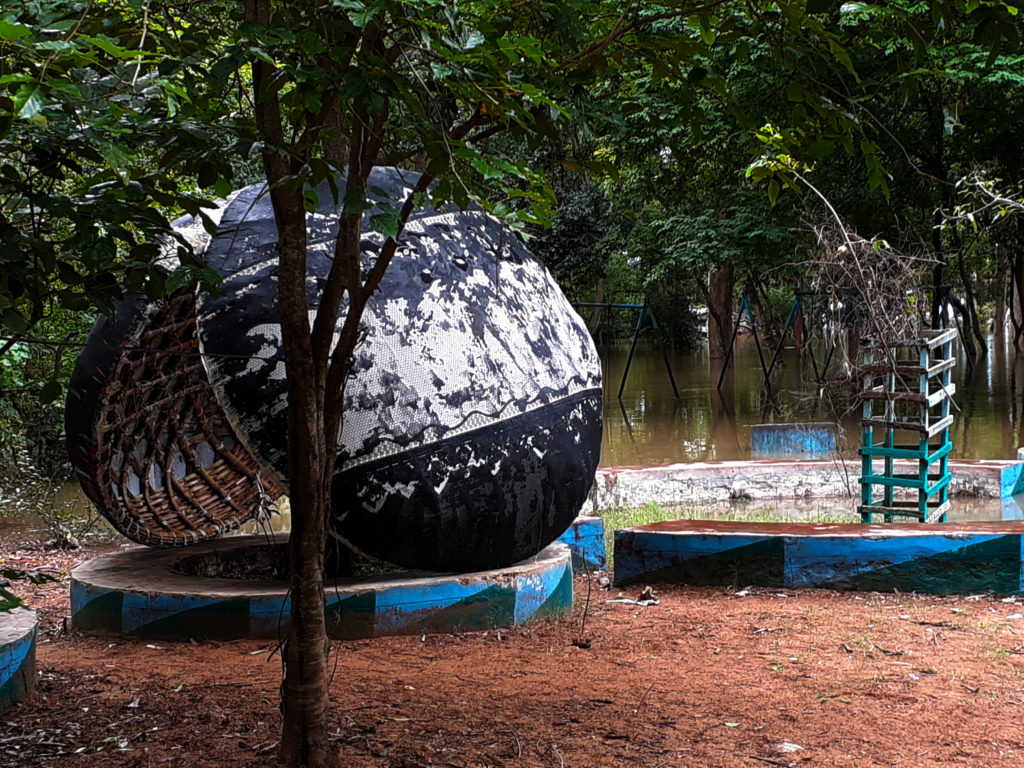
However, due to some mysterious reasons, during the second half of 17th century, sand started to deposit in Talakadu. Within 200 years, the capital was deserted and buried in Kavery sand.
Tale of Three Curses:
In 1610, Woodeyars of Mysuru conquered the Talakadu, which was under the control of Queen Alamelamma with King Ranga Raya. Right after the death of Ranga Raya, with the greed to obtain queen’s jewels, Wodeyar kings attacked the queen. Being furious, Alamelamma threw her precious Jewels along with her life in Kaveri near town Malingi and cursed Woodeyars as-
Talkādu Maralaāgi. Mālingi maduvaāgi
Mysuru dhorege makkalagade hōgali.
Translating to, let Talakadu be filled with sands, let Malangi be a whirlpool and Woodeyars wont have offspring. Believe it or not, it happened. Talakadu is filled with sand, there is a huge water whirlpool at village Malangi where queen threw away her life and till now, Woodeyars of Mysuru have to adopt their next kin to be prince.
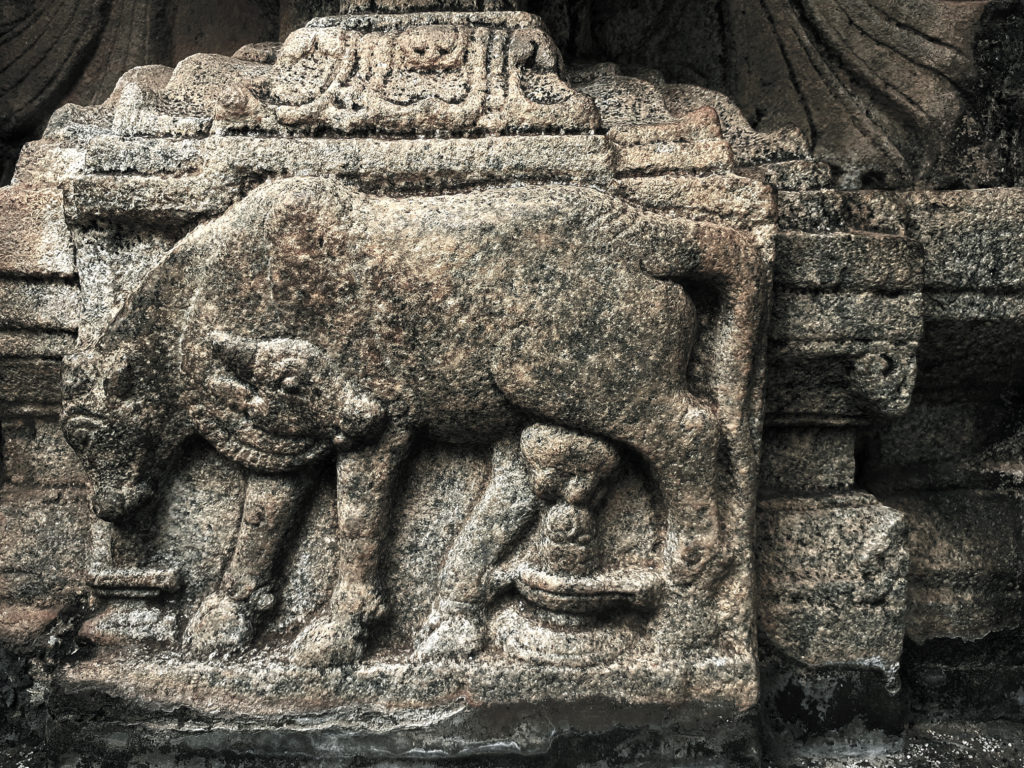
For more practical reasons, lets see what science has to say. As per the report of ASI, Archiological Survey report-Talakad-1992-93; In 14th century, the entire region was under the rule of Vijaynagar empire. in 1342, Madhava Mantri- A minister of Vijayganara empire built a dam, north of the city. This resulted in drastic decrease in the water levels on the Talakadu riverbank, exposing the sand of Kavery. Due to heavy winds, the city started to filled with this sand, covering it completely, eventually.
Kavery splits near Shivasamudram village, making two waterfalls- splitting the streams into five. The five streams again come together near Wesley Bridge to form a complete Kavery again.
Barachukki Water Fall

After a heavy breakfast at Renukamba Thatte idly on Kanakpura road, we drove total 140 kms to reach Barachukki. We parked our car after paying parking fees and started walking towards the fall. As monsoon was at its peak, seven states were under the flood. Kavery was at her fullest might. Brown roaring water was pouring down, impacting bellow rocks, reflecting water droplets into air, making the entire backdrop misty. We stood there for a while, trying to catch the glimpse of waterfall, dodging the crowd, click few picks and went towards Barachukki.
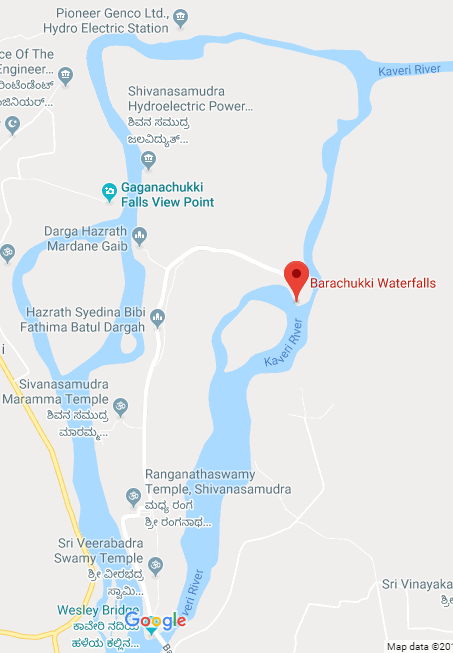
Gaganchukki water fall
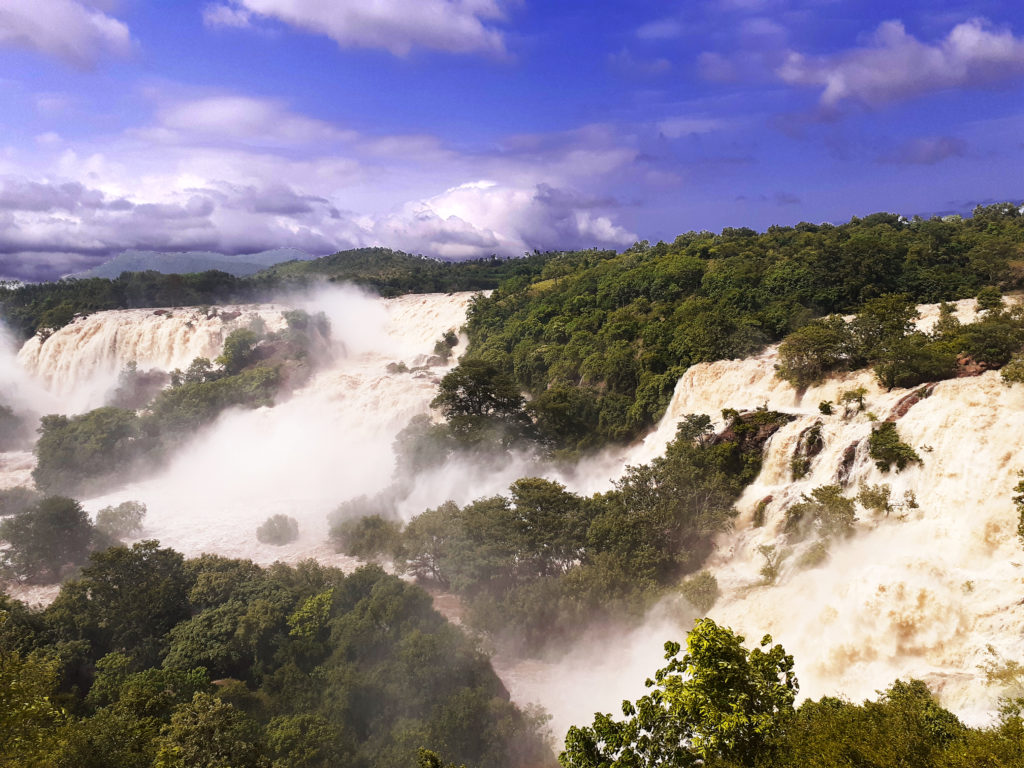
Due to the floods, shortcut which takes us to Gaganchukki was closed. We had to detour for about 12 kms to reach the falls. After parking, walk for 400 meters and you will reach Barachukki. Due to the flood, both falls were symmetric in nature, it was hard to differentiate between them. Kavery was flooded, closing down the roads, water had started engulfing shops and homes closer to the river bed. Brutal deforestation have exposed the hills on the path of rivers, resulting in more and more water getting into the main streams instead of getting absorbed in landmass. The result was in front of us. Juggernaut of Kavery water was roaming freely and coming closer and closer to the small towns, nearby.
Talakadu Complex
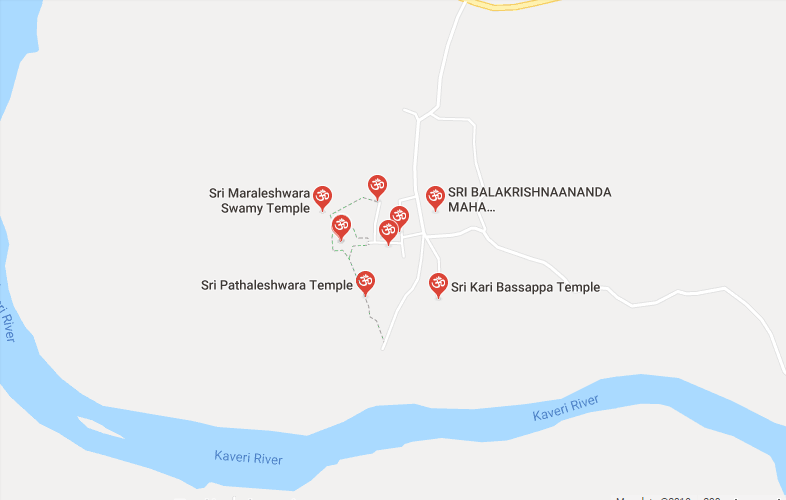
Way to Talakadu from Shivasamudram, cuts through lush green paddy fields and coconut plantation surrounding small villages. Flood water had started to come closer and closer to the road. Another day of consistent rain, and the roads will be blocked cutting the middle villages completely from rest of the world. Park your vehicle at the start of the temple complex. You will find a guide outside the temple to hire for an hour. They will charge around 400 to 500 rupees for one hour and will take you on a trail for one hour. As each temple have deity inside, you have to take your shoes out for five temples. One km trail is covered with sand beneath your feet and a roof on your head.
Vidyanatheshwara Temple

Built in 12th century, temple is carved in hard granite stone reflecting Hoysala style architecture. After you cross the entrance, you will find yourself in a courtyard facing the temple. As usual, there will be a flag pole and Garuda statue before the temple. Main entrance is guarded by huge door keepers. Left one is Nandi and right one is Mahakal. If look closely enough, you will find, their torso is shaped like a bull. On right side of Mahakal, there is a 2-D Ganapati, one sitting on mouse and one riding on horse, marching to a battle, depending on at what angle you observe.
On right hand side of the entrance, you will see the miracle of the so called ‘ancient architecture’: A monolith stone chain. This brilliant piece of huge chain is carved out of single stone, occasionally swinging with the wind, teasing the new age architects. It is an architectural masterpiece indeed. Nothing lesser than a miracle.

Being carved out of granite, Talakadu is no match for Belur and Halebidu which are carved from soap stone, never the less, they do not seize to amaze you. Inside roof is decorated with amazing craftsmanship. Ceiling is decorated with monolith, chandelier carved out, hanging on your head. Pillars are decorated with beautiful carvings.
Sri KeertiNarayana Temple

Somewhat in 12th century, Hoysala had a victory over Chola king in a battle. In order to commemorate the victory, Hoysala King erected this temple. Clear signs of enormous construction can be seen, but all now remained is an entrance and main sanctum with lathe carved pillars where eight feet Keertinarayana stands a tall. Ugra narsimha, Vedhanta and Ramanujacharya idols can be seen in Mantapa. Reflection of early Hoysala period architecture, carved in granite.
After paying to the tour guide, we came back to the Vidyanatheshwar temple. There is a simple and clean mess just across the temple. Karnataka style poori fried in coconut oil, vegetable Curry, Rassam with three types of rice served on coconut leaf, good enough to cool down hunger flames. After lunch, it was about time we get out of the town as due to intense rains in north region, Kavery was overflowing. Main highway connecting the Talakadu was getting filled with water, soon will be disconnecting the whole area from rest of the world.
-
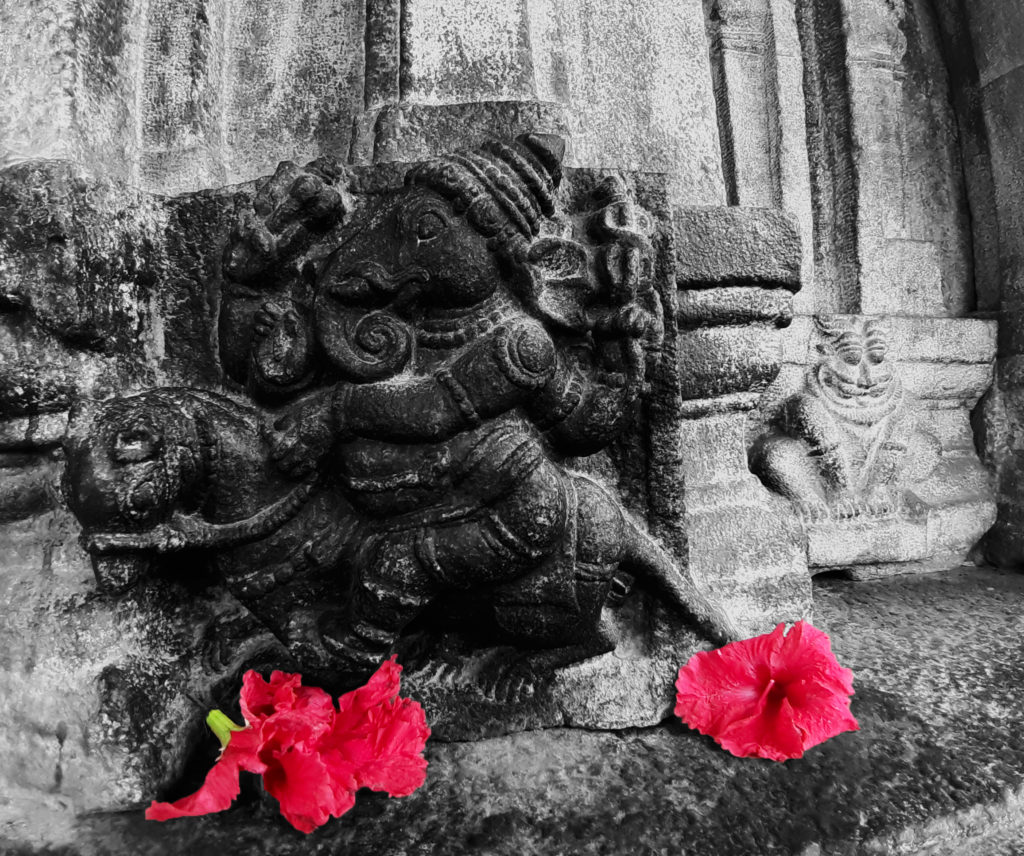
Veer Ganesha
-
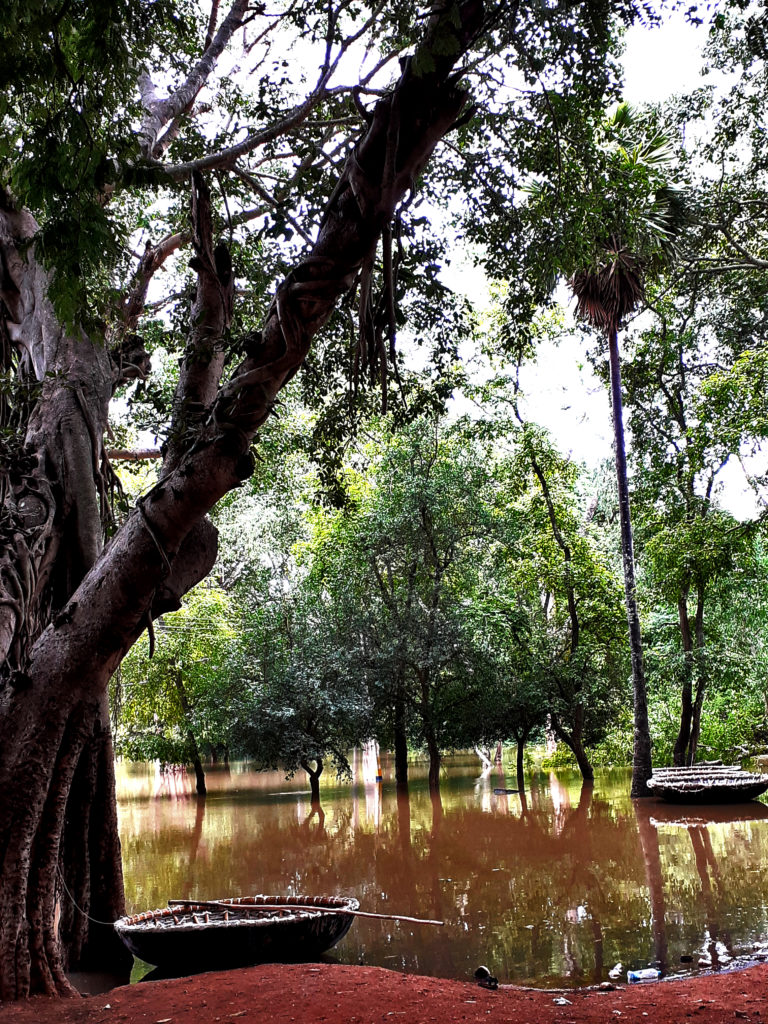
Flooded Kaveri -
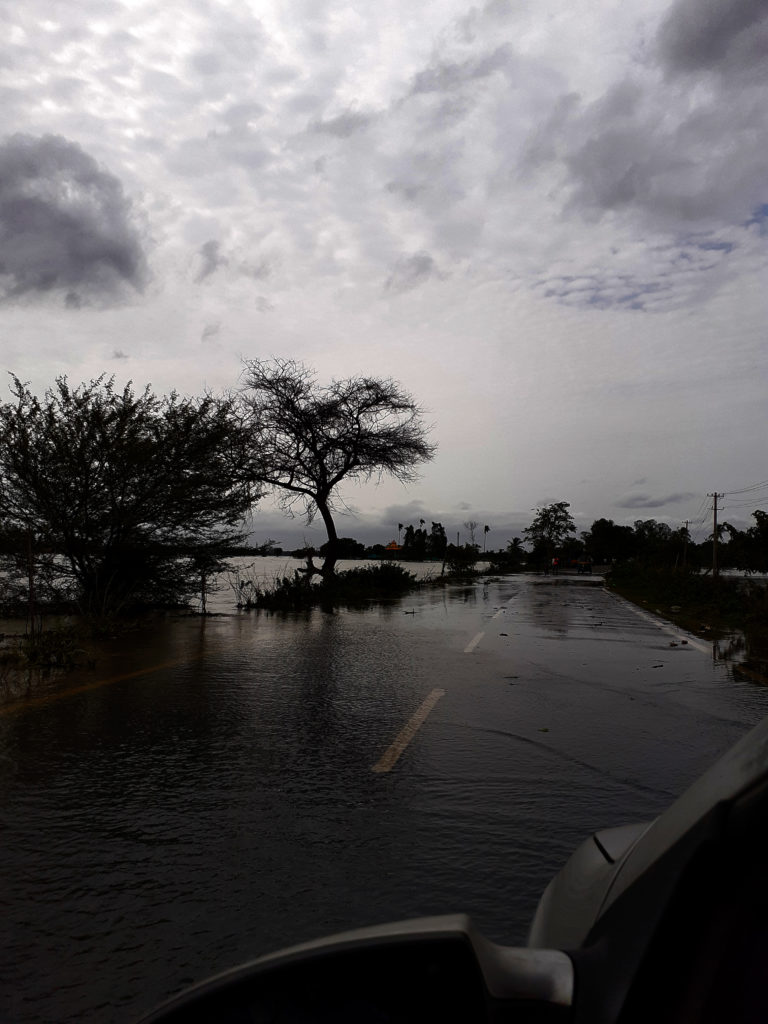
Flooded Kaveri

